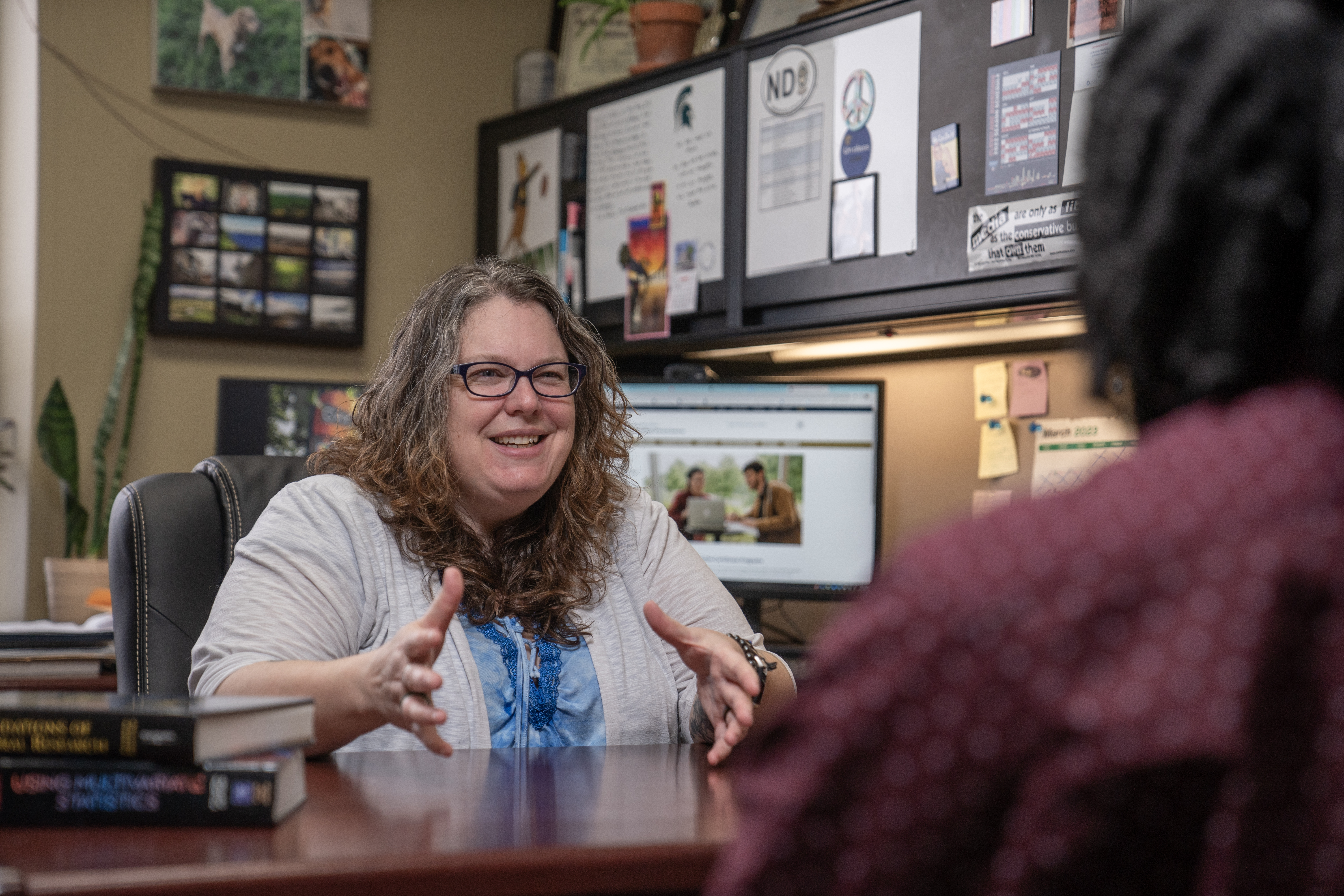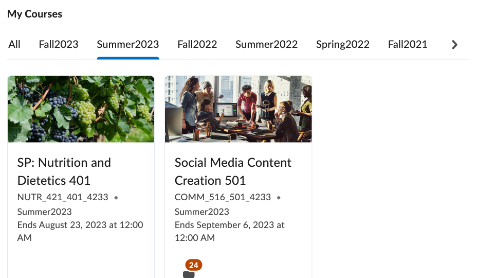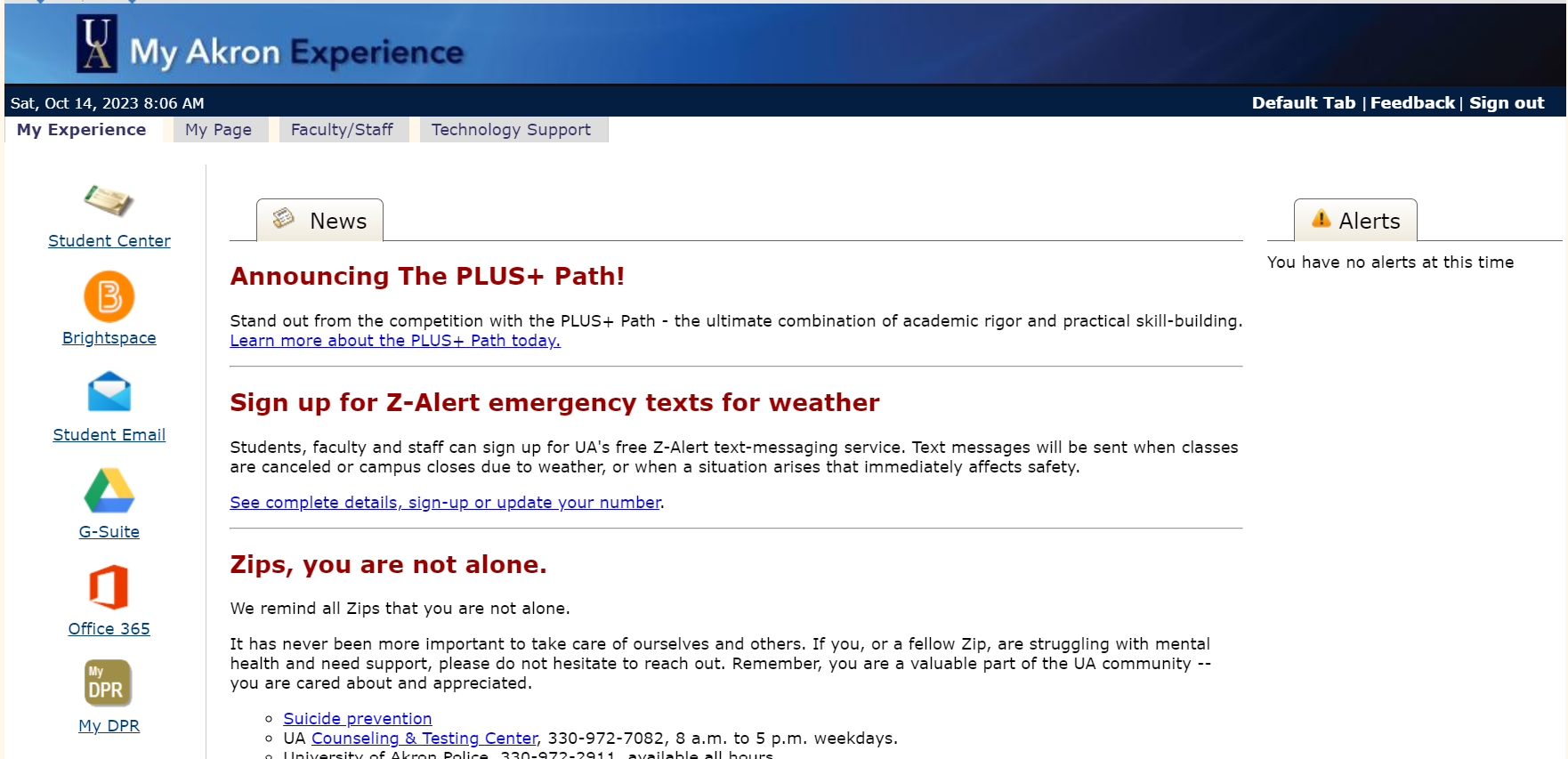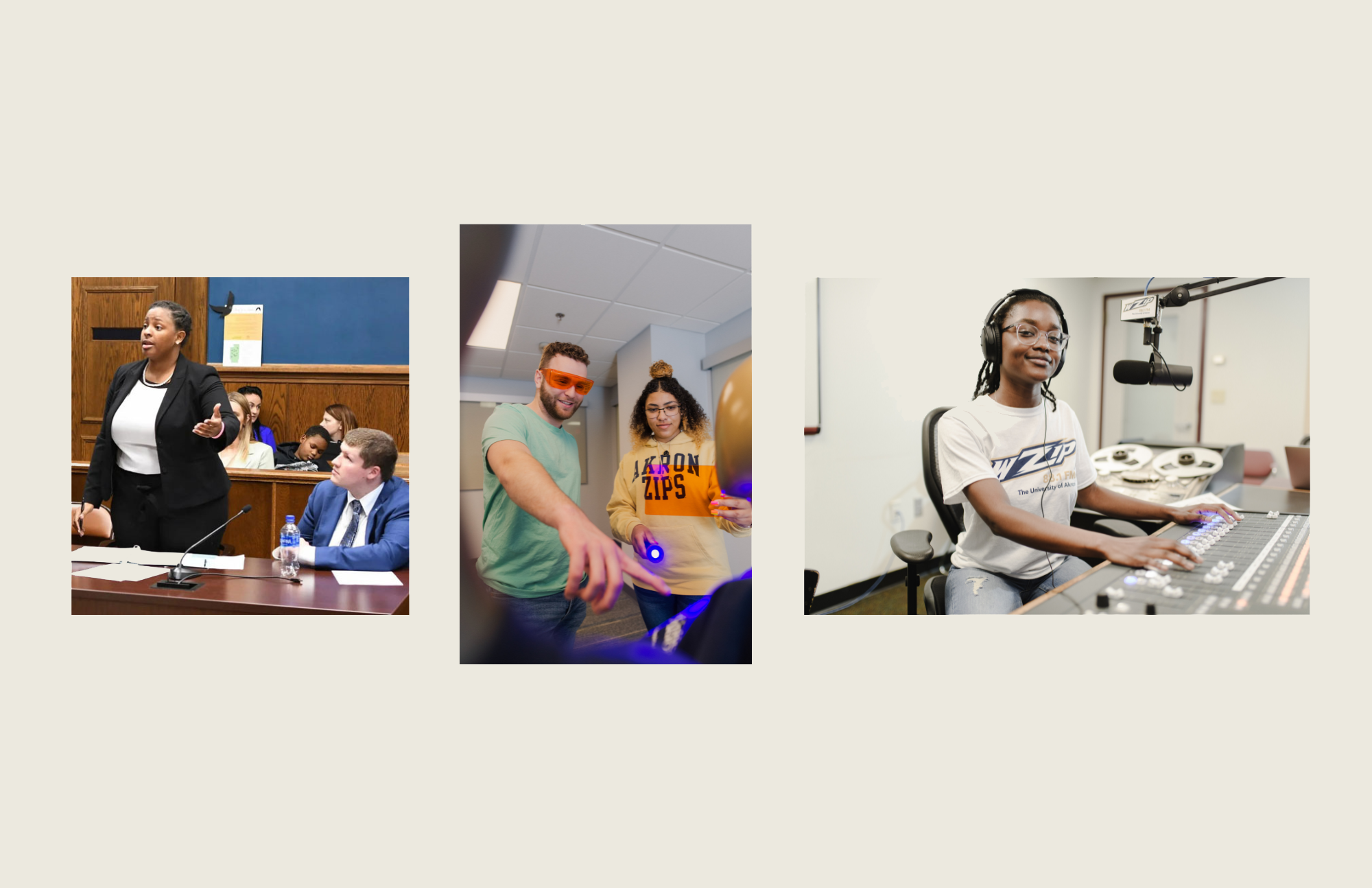_copy.png)
Welcome All New Zips!
18 Essentials to Demystify the College Lingo for New Students
10 Basic Examples of UA Lingo

1.) Advisor: A superhero in your academic story. Your advisor is a staff or faculty member who guides you in selecting courses, understanding degree requirements, and planning your academic path. They are your first go-to! You can drop by (you will hear “walk in”) or make an appointment – virtually or in person.

2.) Brightspace: It’s the name of a virtual hub that UA uses to store almost all the stuff happening in your class, even if all your classes are in person. It’s where your professors post class content such as lectures, discussion threads, grades, assignments, and it helps them keep track of your progress.

3.) Cohort: It’s a fancy word for a ‘group of people.’ On campus, a cohort refers to a group of students that enter a particular degree program together and you progress alongside one another until graduation. Most cohorts on campus are based on academic disciplines, but some can be based on a shared sense of community and belonging.

4.) Concentration: This refers to a specialized area of study within your major. You are earning your bachelor’s degree, with a concentration that allows you to focus on a specific subject or field of interest that matches up with your career goals and interests. Sometimes we say “emphasis” or “track.”
- You can be a communications major with an emphasis in public relations.
- You can be a criminal justice major on the law and courts track.
- You can be majoring in geosciences with a concentration in environmental science.
5.) Course Catalog (or Bulletin): This is your treasure map to all the courses offered at UA. It's a comprehensive list of classes you CAN take, classes you MUST take (“core requirements”), along with their descriptions, prerequisites (or “pre-req sounds like pre-wreck”), and credit hours.
6.) Credit Hours: Courses are measured in credit hours, indicating the amount of time you'll spend in class each week. Usually, one credit hour corresponds to one hour of lecture or two hours of lab work per week. Your course load is the number of courses, or total credit hours, you take in any given semester. A full-time student’s course load is 12 credit hours or more per semester.



7.) Department - College - School - Center - Institute:
- A department is the basic academic unit that consists of a group of faculty members and their chairperson (“chair” for short). The department appoints faculty, develops courses and programs, and advises students.
- Departments with related interests are organized into colleges – BCAS is the home to Education, Fine Arts, Humanities, Natural Sciences, and Social Sciences. A college is led by a dean, a.k.a. the big boss.
- Academic units that are in a college (BCAS) but without departments are called schools – i.e., School of Music, School of Communication, Myers School of Art. Schools have a director, with similar duties of a department chair.
- A center or an institute operates independently, with an existing college faculty member as director; or it has its very own faculty and staff. It does NOT need to have its own building, it can be a suite of offices on a floor in a building. Centers and institutes are where a lot of research and work with the community happens. They also bring in a lot of outside experts you can learn from and work with.
8.) General Education (Gen-Ed) Courses: Usually taken in your first two years, gen-ed classes cover topics within the arts and sciences, ensuring you get a well-rounded education. BCAS is the home for almost all the gen-ed classes at UA.
9.) Minor: In addition to declaring a major (with a concentration in something), you can also declare a minor(s) in another department or school. Minors require fewer credits than majors and provide you with a certain set of skills, feed your passion, or complement your major by providing additional depth or breadth to your experience.
- You can be a psychology major with a minor in Spanish because you want to be a counselor in a predominately Spanish-speaking population.
- You can major in statistics and minor in graphic design so you can create attention-getting visuals out of all the data you analyze.
10.) My Akron: This is an online site where you can access Brightspace, view your student account information, and register for classes, to name a few things. Advisors or professors may say to you “log into your My Akron…” You can do that from UA’s web site or our mobile app.

*Visit uakron.edu and select My Akron at the top, and follow the instructions to sign in.
8 Essential BCAS Lingo
(What does BCAS stand for? Stay tuned.)
1.) BCAS: Short for the Buchtel College of Arts & Sciences. We often pronounce it “BEE-cass.” We are the largest college at UA. “What is Buchtel?” you may be asking. The institution now known as The University of Akron was founded as Buchtel College in 1870 with financial support its founder, industrialist John R. Buchtel.
2.) CAS: Short for the name of the building of College of Arts & Sciences, located on campus at 290 S. College Street. Your advisors, the dean and his staff work out of this building. So do some of the departments.
- BCAS is made up of departments and schools in a LOT of buildings on campus. We are in Kolbe, Zook, Crouse, Guzzetta, CAS, Folk Hall, Knight, and Auburn (*whew*).
3.) Experiential Learning: A fancy way of saying “learn by doing.” It can include internships, community service, research and experiments, and study abroad, just to name a few. You will also hear “hands-on learning” and “applied learning.” The gist is you hopping on a bicycle to try and learn to ride, instead of listening to your parent explain the concept.
4.) Fine Arts: Many creative people are here. This is where you focus on the study of music education or art history; practice the visual arts (painting, drawing, sculpture, photography, printmaking, ceramics, and graphic design) and practice the performing arts (theater, dance, music).
5.) Humanities: Ah, the poets and philosophers! Disciplines like English, foreign languages, and philosophy fall into the category of humanities here at BCAS. Studying humanities cultivates critical thinking and analytic skills. It’s where you can learn empathy, ethics, and cultural awareness. You can also sharpen your writing and language skills, which you WILL use in your life and in almost every job you ever land.
6.) Interdisciplinary: It’s another way to say “integrate.” It means different academic disciplines work together to gain a broad (or “holistic”) understanding of complex issues. To be interdisciplinary means you bring together concepts, theories, and methods to address real-world problems.
- Statistics can help analyze criminal justice data about incarcerated women in Ohio prisons, culminating in a short film made by a media studies major.
7.) Natural Sciences: Here, you are exploring the fundamental principles and laws that govern the natural world: no biggie. You will learn about the physical, biological, and chemical aspects of the universe. If you dig (and natural sciences is where you can, literally, dig) the behavior of matter and energy (physics), the composition and reactions of substances (chemistry), the diversity of life (biology), or Earth's physical structure, processes, and history (geoscience), natural sciences are where you learn to unravel the underlying mechanics of the natural world.
8.) Social Sciences: If you ask yourself “Why do people do that?!” or “What makes someone tick?” or “How have we survived as a society?” or “Who really makes a difference in our government?” or “When are there increases in crimes?” -- this is your jam. Social sciences examine the dynamics about how individuals and societies relate to one another. Disciplines in social sciences include sociology, anthropology, political science, criminal justice, communication, and psychology. It’s about understanding the complexities of human behavior, societies, institutions, and their interconnections that shape human relationships and societies. BCAS is home of the social sciences.

Remember, everyone starts somewhere, and adjusting to college lingo is just one step in your amazing journey. Don't hesitate to ask questions, seek help, and connect with fellow Zips. Welcome to your new academic home – embrace the adventure and enjoy the ride!
Resources For You
Friendly people are here to help you. You have PAID for these services as part of your tuition – USE THEM. They are here to assist you and are happy to do it.
- Tuition & Billing – Office of Student Accounts, (330) 972-5100
- Financial Aid & Scholarships – Office of Student Financial Aid, (330) 972-7032
- Dorms and Meal Plans – Residence Life & Student Housing, 330-972-7800
- Academic Accommodations – Office of Accessibility, (330) 972-7928
- Counseling & Testing – Counseling & Testing Center, (330) 972-7082
- General & Emergency Assistance - ZipAssist, (330) 972-7272

